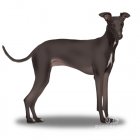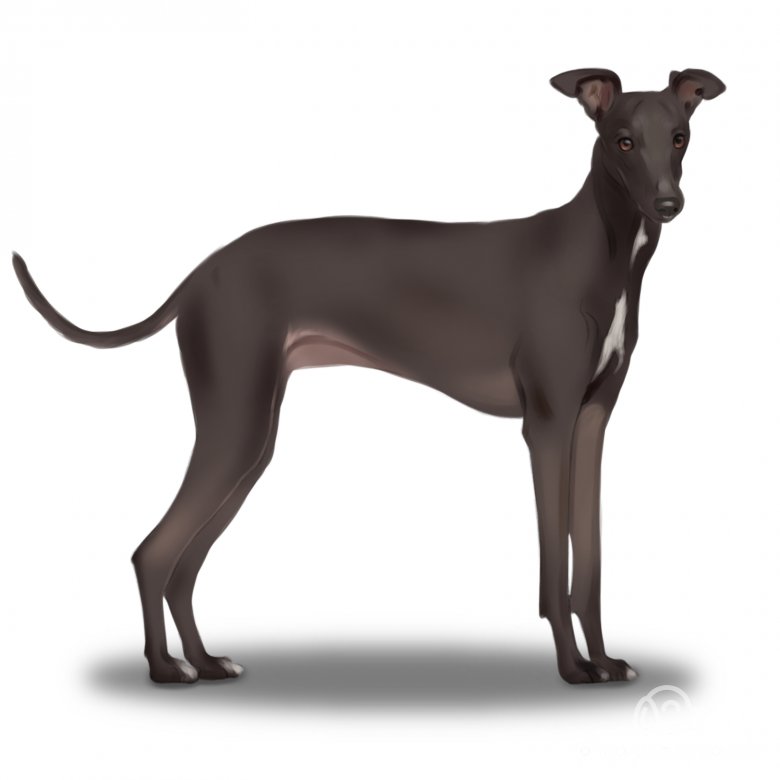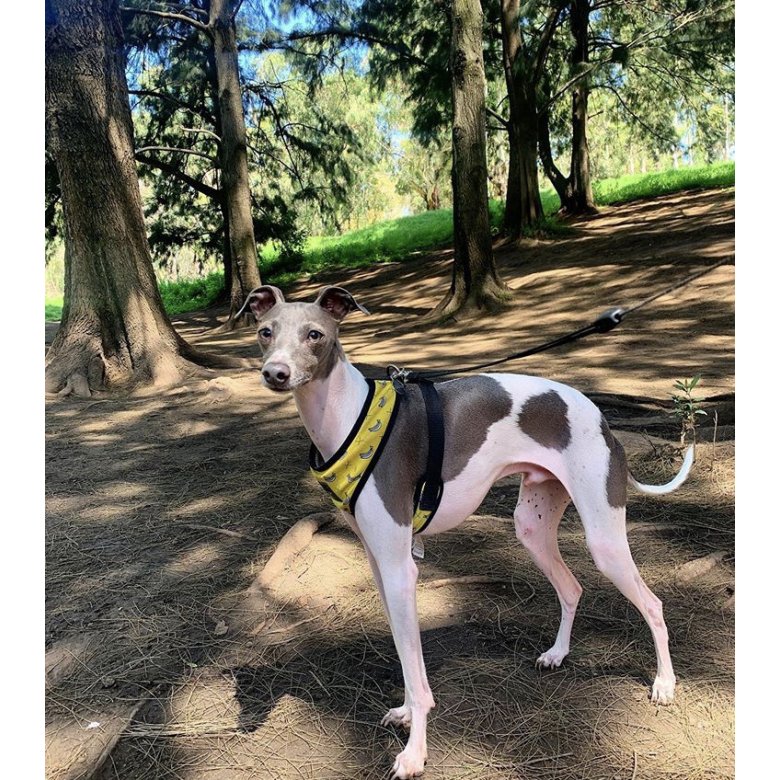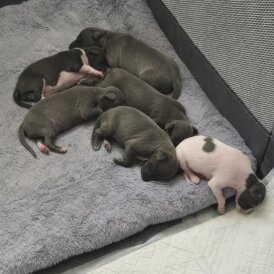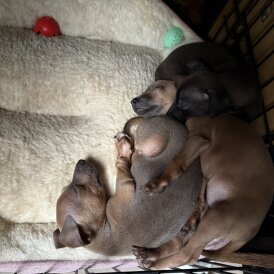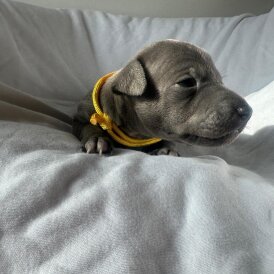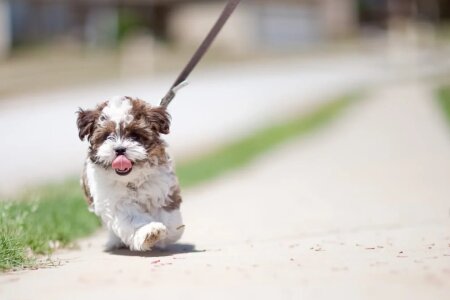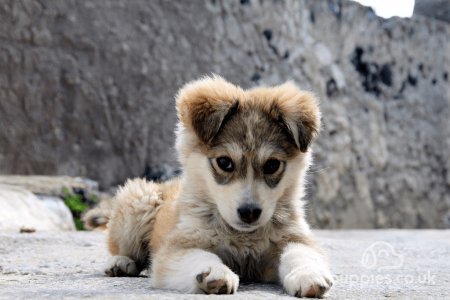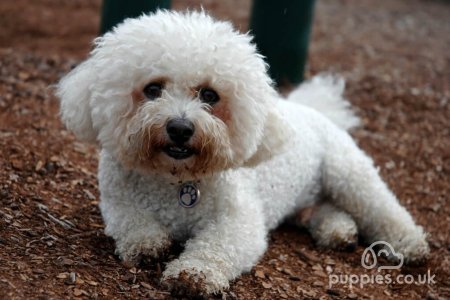Known in Italy as the piccolo levriero italiano, the small Italian Greyhound exudes a refined, elegant style in a slender body. Authentically and stereotypically Italian, this nimble breed of racing dog is not to be confused with its larger Greyhound cousins. Rather than a strict focus on racing, Italian Greyhounds have become beloved companion dogs in the UK and worldwide. There are many benefits to owning an Italian Greyhound puppy. Not only do they have a sleek aesthetic and all-around good temperament, but Italian Greyhounds are a natural and pure breed with ancestry dating back millennia. These sighthounds were revered by royalty and aristocracy from as far back as ancient Egypt to a peak during the Renaissance. If generations of nobles loved this breed then owners are in for many pleasant surprises.
Why Italian Greyhounds are Great
Some highlights of Italian Greyhounds:
Grooming: a cursory glance at an Italian Greyhound’s short coat of fur is enough to realise that this breed requires little grooming.
Affectionate: this breed can take a while to warm up to owners, but once they do, they’re loving companions that enjoy cuddling.
Adaptable: since they’re smaller than other Greyhound breeds, Italian Greyhounds are adaptable and are better suited to apartments and smaller homes than their larger counterparts.
Barking: for quiet homes, Italian Greyhounds are ideal thanks to their low inclination to bark.
Watchdog: this breed is able to function as a watchdog fairly well.
Things to Consider when Looking at Italian Greyhounds for Sale
Some downsides to the Italian Greyhound:
Isolation: this breed doesn’t tolerate being left alone for prolonged periods.
Delicate: this breed is prone to broken bones.
Child-friendly: although Italian Greyhounds are quite child-friendly in general, they may not get along so well with young children and toddlers.
Roaming: as one may expect, racing dogs such as the Italian Greyhound are prone to escaping if left unsupervised.
History of the Italian Greyhound
Small sighthounds were a popular choice amongst Pharaohs in ancient Egypt. Tombs containing skeletal remains of Italian Greyhounds (or, at least, breeds that resemble Italian Greyhounds) have been discovered and they were likely also known in Anatolia and Greece in antiquity. Greek pottery depicts the Italian Greyhound, confirming that it, or a breed similar to it, made its way from Egypt into the Mediterranean region. Why, then, is it not called the Egyptian Greyhound? The breed was introduced to Italy in the 5th century BC, whereby the Roman Republic seems to have had reverence for this type of hound, as displayed in frescoes found in Pompeii. Soldiers on campaigns were also known for returning with hoards of loot, including hounds from the newly-conquered provinces. As epochs progressed towards the Renaissance, the Italian Greyhound thrived in the courts of nobility across Italy. Depictions by painters such as Giotto attest to the popularity of this elegant breed. It was during the 17th century that this breed made its way into England, and it became a beloved breed by monarchs such as Queen Anne and Queen Victoria.
Appearance
It isn’t too difficult to spot a Greyhound, and Italian Greyhounds are simply smaller versions. They are recognisable by their extremely short coat of fur, revealing a slender and refined physique. Standing tall, or as tall as these small dogs can, they exude grace and distinction. Italian Greyhounds are delicate, and they certainly look it as well. They’re the polar opposite to fluffier, stockier breeds such as Schnauzers and English Terriers.
How big is the Italian Greyhound?
Italian Greyhounds are small-sized dogs. Males and females grow on average to 30-38 cm in height.
How heavy is an Italian Greyhound?
Fully-grown adult male and female Italian Greyhounds weigh between 3.6-8.2 kg on average.
What colour is the Italian Greyhound?
Italian Greyhounds have the following commonly-accepted coat colours:
White is undesirable, but patches of white on the chest and feet are acceptable. It should be noted that the Kennel Club of Great Britain recognises a wide range of colours in addition to the above colours, such as fawn, tan, blue, and red, and combinations of these.
Temperament
The Italian Greyhound’s fragile appearance plays a large role in its temperament. They enjoy running as they’re inclined to do, but can also roam and wander too far off of the dog lead and thus require supervision. Furthermore, tall fences are required in gardens to prevent them from nimbly leaping over. This breed enjoys spending quality time with owners and their families. It’s typical, however, that significant amounts of time will need to be devoted to forming a bond with an Italian Greyhound since they can be slow to trust. That’s why it’s best to acquire a puppy and to develop an affectionate companionship with them over the years.
Do Italian Greyhounds make good guard dogs?
As an alert breed, Italian Greyhounds may bark to alert owners of suspicious activity. They are about average as watchdogs because of this. They don’t make good guard dogs.
Do Italian Greyhounds bark a lot?
Italian Greyhounds don’t bark much, making them an ideal choice for quieter households.
Are Italian Greyhounds easy to train?
Training Italian Greyhounds can be a challenge, despite their high intelligence. Patience and persistence are required in order to properly train this breed. Do not hit or punish your puppy harshly if he is having difficulty eliminating outdoors, for example. This breed is physically and emotionally sensitive and won’t take well to abuse.
Are Italian Greyhounds playful?
This breed enjoys a fair amount of play, more so as puppies. They also enjoy relaxing on the sofa, however, making them a well-balanced breed for families.
Are Italian Greyhounds good with children?
Italian Greyhounds are not the best puppy choice for families with young children. They can be socialised and thus accustomed to living with older children, but they should not be a strong consideration where infants and toddlers are concerned.
Are Italian Greyhounds good with other pets?
This breed can get along well with other dogs. Cats and smaller pets such as rodents may trigger its natural prey drive, however. Socialisation is required for cat owners.
Can I leave an Italian Greyhound alone?
Few dogs can tolerate extended periods of isolation, and Italian Greyhounds are no different. They can tolerate shorter bouts but will be happiest when family members are present to give them affection and care.
Do Italian Greyhounds like water?
Nearly all Italian Greyhounds are afraid of the water. They are awful swimmers due to their small paws and slender legs. They dislike being on boats.
Health
How long do Italian Greyhounds live?
Generally, Italian Greyhounds are expected to live anywhere from 12-15 years.
How much exercise does an Italian Greyhound need?
Regular exercise is necessary for keeping Italian Greyhounds physically and mentally stimulated. Approximately one hour every day should be spent going for walks or playing games, particularly games involving lots of forward movement and less lateral movement due to their skeletal structure.
What are Italian Greyhounds’ common health issues?
This breed is prone to a few health issues, including:
Epilepsy;
Legg-Perthes disease;
Patellar luxation;
von Willebrand disease;
Cataracts.
It should be noted that accidents are a significant cause of death.
Care
How much space do I need for an Italian Greyhound?
Italian Greyhounds are adaptable to apartment dwelling and homes of all sizes. An ideal environment would be a small home with a high-fenced garden area.
What should I feed my Italian Greyhound?
This breed requires ¼ to ½ cup of high-quality dog food every day. Since this breed eats so little, ensure that their diet is rich in nutrients and free of additives.
How much grooming do Italian Greyhounds need?
Italian Greyhounds require little grooming. Brush them twice a week and inspect their short fur coat for any signs of injury. Have them taken to a veterinarian often and ensure their teeth are being inspected because this breed is prone to periodontal disease.
Do Italian Greyhounds shed?
This breed hardly sheds any fur and requires little cleaning.
Average Costs
How much does it cost to keep an Italian Greyhound?
As a rough guide in pricing: Cost to buy: roughly £700-1,000 for a well-bred Italian Greyhound puppy Other costs (Vet, Food etc): £50-80 per month
Specific Buying Guide
You can read our general buying guide here, with the most important thing being going to view your Italian Greyhound puppy, seeing it with its mother, and checking the quality of the breeder. More specifically, here is some Italian Greyhound puppy buying advice:
Small breeds such as the Italian Greyhound are often prone to a litany of hereditary health issues. Not only are Italian Greyhounds delicate, especially as puppies, but they’re susceptible to dental problems, cataracts, and diseases that can put an abrupt end to their life. Care and supervision are responsible behaviours on the part of the owners and are not to be taken lightly by prospective owners.
Italian Greyhound puppies are likely to injure themselves whilst playing. When they’re this young, ensure that your home is as safe as can be so that your puppy won’t hurt itself too badly or break its bones with objects around the home or garden.
Other Reading, Adopting Italian Greyhound Puppies and Rescue Organisations
A big thank you to the following sources who helped to shape this article: Kennel Club of Great Britain: https://www.thekennelclub.org.uk/services/public/breed/display.aspx?id=6155 Federation Cynologique Internationale: https://www.fci.be/Nomenclature/Standards/200g10-en.pdf Dogell: https://dogell.com/en/dog-breed/italian-greyhound https://italiangreyhoundrescuecharity.org.uk/






